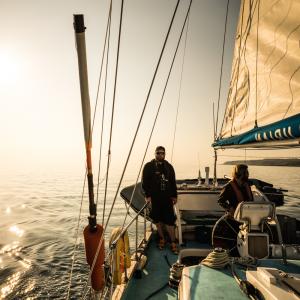Scotland's seas and coasts are home to an amazing range of marine species and habitats, from the sheltered sea lochs to the open waters, from seagrass beds to rocky reefs and underwater seamounts.
Not only do such diverse habitats support thriving populations of marine mammals like dolphins, porpoises, whales and seals, but they are also home to vast numbers of seabirds, fish and other spectacular marine wildlife like seahorses, sponges and deepwater corals. The marine environment also supports a multitude of human activities including fisheries, tourism, and shipping, and will be a key area for the development of marine renewables.
Despite the importance of the marine environment, we are failing to manage it sustainably. This is why we’re working to move management towards sustainability in line with international commitments and deliver a marine environment where economic interests can operate effectively while not undermining the health of our seas.
Our work focuses attention on a number of key areas including: promoting the full implementation of the Marine (Scotland) Act, working with stakeholders to ensure that our valuable fisheries have a sustainable future, and ensuring Scotland captures its offshore renewable potential.
We are also hopeful that Scotland can lead the way in the governance of our marine environment and deliver an example that can be exported and replicated in other sea areas.

Our Scotland office has long campaigned for a Marine Act to safeguard Scotland’s seas and in 2010 the Marine (Scotland) Act was passed. The Act provides a planning system for the whole of Scotland’s marine environment and a requirement to establish Marine Protected Areas (MPAs). This follows on from the UK Marine and Coastal Access Act passed in 2009 and emerging legislation in Wales and Northern Ireland.
In July 2014, the Scottish Government created 30 MPAs in Scotland, and put forward proposals for a further four to protect some of our larger species, such as minke whales and basking sharks. The following year the government also consulted on how certain types of fishing activity should be managed in some of the MPAs designated for sensitive species and habitats. WWF Scotland worked hard with its partners in Scottish Environment LINK’s Marine Group to make sure these management measures are fit for purpose. If managed effectively, the MPA network represents a major step towards reversing the historic decline in biodiversity that the Scottish marine environment has suffered. In 2015 the Scottish Government published Scotland’s first National Marine Plan, which sets out their objectives and policies for managing Scotland’s seas, and which will form the basis for localised Regional Marine Plans to be developed.
We’re working hard towards continued effective implementation of the Act and to ensure that the MPA network is properly managed, monitored and enforced according to the needs of the features they were designed to protect. The new marine planning system must support this goal by adopting an ecosystem approach to manage the growing pressures of diverse human activities in an environmentally sustainable way.
Renewbale energy from the Scottish seas
As part of our work on Scottish marine environments, we’re working to help ensure the sustainable development of the marine renewables sector so it fulfills its potential to help tackle climate change.
It is well known that Scotland’s seas contain a wealth of renewable energy sources from offshore wind to wave and tidal power. It is estimated Scotland has the largest offshore renewable energy resources in the European Union (25% of the EU’s offshore wind and tidal power, 10% of the EU’s wave power).
 Why UK seas and coasts are important
Why UK seas and coasts are important
 Improving Scottish fisheries
Improving Scottish fisheries